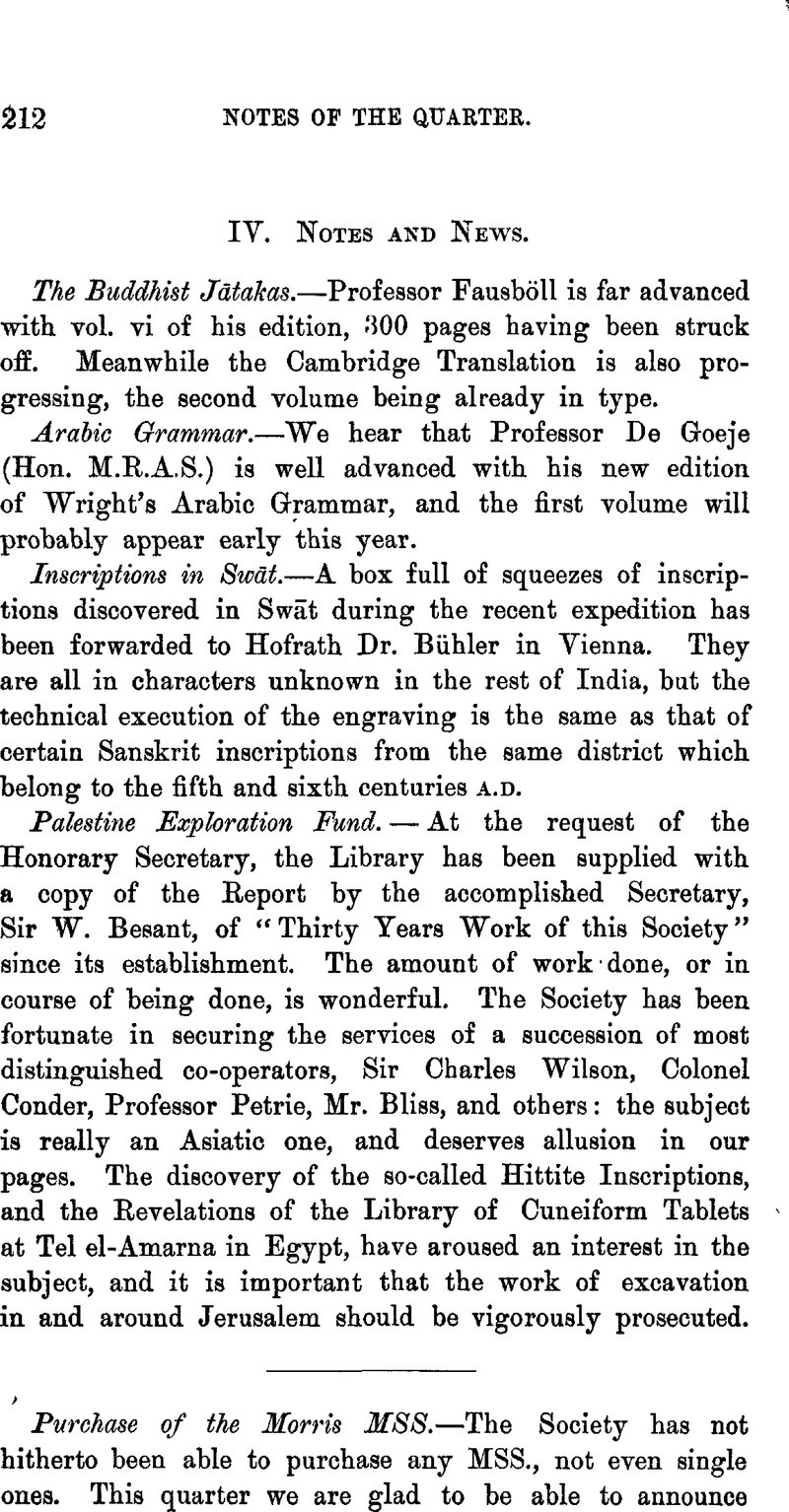No CrossRef data available.
Article contents
Abstract

- Type
- Notes of the Quarter
- Information
- Copyright
- Copyright © The Royal Asiatic Society 1896
References
page 215 note 1 Those who may look up the subject should not fail to read Mr. FitzEdward Hall's delightful footnote on p. 8 of his Introduction to the Vāsavadatta (ed. Bibl. Ind., 1859).
page 215 note 2 [It should have been mentioned that in the letter the possibility of two Mayūras was clearly referred to.—Rh. D.]
page 215 note 3 [Not at all. Just as Galaturu-mūla is used at the end of this note as a name, so Wilgam-mūla, which is an epithet of a distinguished member of the Wilgam-mūla fraternity, may be rightly used as a designation without supposing it to be a family name.—Rh. D]
page 216 note 1 Sometimes called samāgama ‘confraternity.’ See M. Dharmaratna's preface to his edition of the Abhidhammattha-saṅgaha, p. 1 ad fin., where the Uttara-mūla and Vilgam-mūla are given as the leading samāgamas in the twelfth century a.d.
page 216 note 2 Edited at Colombo, 1890, by my friend Don M. de Zilva Wickremasinghe (Vikramasiṃha), whose kind assistance in the present note I have to acknowledge. It would be a most useful work if some of our friends in Ceylon (e.g. the Asiatic Society there) would undertake a translation, or at least an abstract in English, with an index showing names and chronology.
page 216 note 3 These are Udayachandra Datta's “Hindu Materia Medica” cited by Böhtlingk, and the Arabic writer Ibn al-Baīṫar, who may be consulted in “Notices et extraits” (Bibl. Nationale, Paris, tom. xxvi., p. 403)Google Scholar, a reference given to me by my colleague, Mr. A. G. Ellis.




